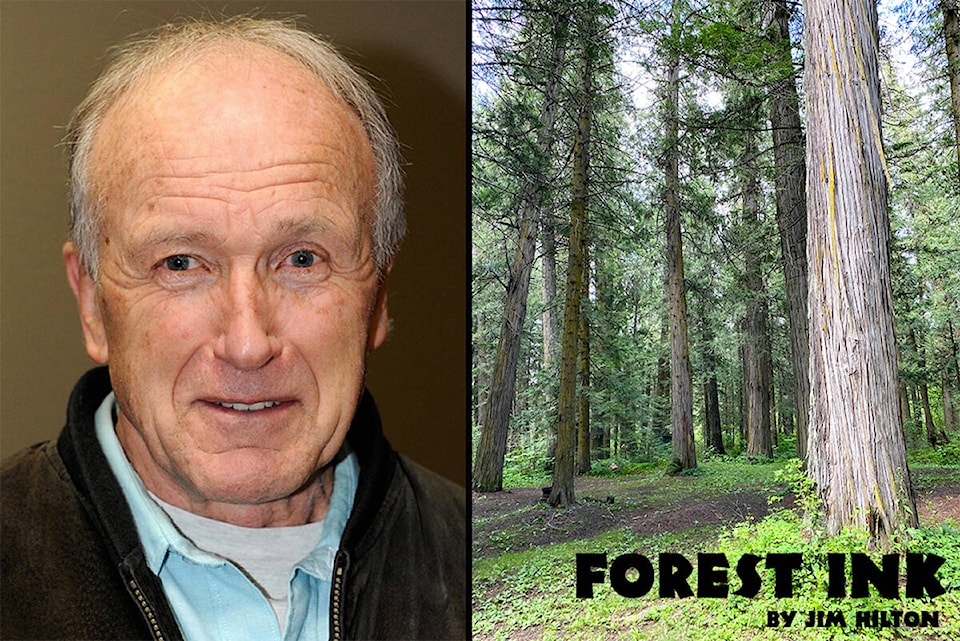A recent article by Jim Stirling entitled B.C. government risking dimming the lights on forest industry describes the impacts of the recent decision of deferring of 2.6 million hectares of old growth forests. Some of the discussion centres around definitions.
For example, the provincial government defines old growth on the coast as being at least 250 years old and 140 years old in the Interior. There are also different classes like big tree old growth, rare old growth and ancient old growth. If all the present ‘old growth’ deferrals were to be made permanent, B.C. Forests Minister Katrine Conroy has estimated 4,500 jobs would be affected (industry infers lost).
Most of the article focuses on the impacts of the estimated job losses while I think the most relevant discussions should focus on how much of the old growth remains and what impacts the wildfires, pests and climate change may have on B.C. forests. I agree with the author’s statement that “the provincial government hasn’t committed sufficient funds to comprehensively update basic forest classifications and inventories. The information is critical to developing management strategies.”
If we had accurate data on our forest inventories we would be able to determine a more useful number like old growth replacement values on our Timber Supply Areas (TSAs), community forests and any other areas we have to determine the annual allowable cut. Take the recent events at Fairy Creek where supporters justified the proposed harvest because they stated that more old growth was produced every year and therefore was sustainable. While I agree with the concept I have not seen any documentation as what amount of logging of old growth is sustainable in this example.
The smaller the unit (like a community forest) the easier it would be to determine and defend an old growth replacement value. Using an age class distribution table it is easy to see how many hectares of a particular age class (for example, the amount of 240 year old fir forest that moves into the 250 year age class during a ten year period). While there are a number of factors that need to be considered before assigning a cut level at least it gives the planners a place to start. Using some reasonably simple forest models it would be possible to predict the amount of old growth grown over a few decades in a given timber supply area and how this compares to the proposed level of cut.
While I will be the first to admit that this may be an over simplification, it is more defend-able than the estimates of how much job loss is due to the old growth deferrals considering the many other influences on job loss like market fluctuations, modernizing of logging and lumber production and of course ongoing impacts of fires, insects and climate change.
I think a much more productive use of people’s time (rather than at blockades) would be spent at a regional TSA planning meeting where government and industry use the most recent forest inventories to explain the rational of how the amount of the next decade of logging old growth was arrived at, what harvesting options were considered and what might be some alternatives. During this deferral period is the best opportunity to use a specific example of how old growth could be better managed for the benefit of future generations or we could just end up with more blockades after the deferrals end.
In future articles I will look at harvesting practices other than clear cuts that have been used on coastal forests.
Jim Hilton is a professional agrologist and forester who has lived and worked in the Cariboo Chilcotin for the past 40 years. Now retired, Hilton still volunteers his skills with local community forests organizations.
READ MORE: FOREST INK: Making forest policy changes can be painfully slow
Like us on Facebook and follow us on Twitter.
